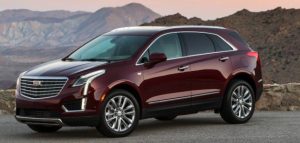More Electrical Power; Better Fuel Economy
Automakers are being squished. On the one hand, governments have implemented new rules to reduce harmful emissions and increase fuel economy. On the other hand, new electric technologies are taxing the traditional 12-volt battery, making it more difficult to meet tightening global fuel-economy and carbon-dioxide emissions.
The solution? A 48-volt battery system, which will increasingly begin to appear on new cars, trucks and SUVs. They will power stop-start motors, hybrid motors and turbochargers, allowing for smaller engines with fewer emissions, better fuel economy and performance. They’ll handle accessories ranging from mechanical or hydraulic power to electric power, such as power steering, power brakes, water pump, radiator cooling and air conditioning.

Over the past decade or so, car companies have been adding a ton a new infotainment options along with driver-assist safety features like adaptive cruise control, lane keep assist, blind spot monitoring and backup cameras. In addition, you still have heated seats, heated steering wheels and heated windshields. No wonder the standard 12-volt electrical systems are being stretched thin; so 48-volt systems will step in and help accommodate the need for more on-board power, as well as aiding automakers to meet government mandates.
This is especially true on luxury cars. Audi is using a 48-volt system to help power an electric supercharger, and at the high end, the $230,000 Bentley Bentayga SUV has added a 48-volt along with its active anti-roll bar. Mechanical anti-roll bars reduce the car’s lean in a turn. This one reduces roll further, so passengers feel less discomfort when the driver takes a curve at high speed.
The New Mild Hybrid
The new mild hybrid systems are not like the Integrated Motor Assist mild hybrid system introduced on the Honda Insight in 1999. Rather, they are similar to General Motors’ Belt Alternator Starter (BAS) system of the mid 2000s as found on the Saturn Vue sport utility and Buick LaCrosse sedan.
These new systems will replace the traditional alternator and starter with a 48-volt device called a motor generator unit (MGU) that runs off the accessory belt. The drive system appears to be standard belt and pulley system connected to the MGU. Tensioners allow the motor to apply torque by the MGU and also to the MGU. A small 48-volt lithium-ion battery and a DC-to-DC convertor completes the hybrid system and will take up a small amount of space in the trunk.
Under braking, energy can be collected and stored in the battery. With some systems it can also power cars so they can coast with the engine off while at speed, both of which can boost fuel economy. The batteries can also provide around 20 horsepower and up to 100 pounds-feet of torque for a bit of extra performance. The immediacy with which electric systems can deliver torque can help fill performance gaps in a gasoline or diesel engine’s rev range. These new mild hybrid systems will also have stop-start systems; the hybrid application will improve the quickness and smoothness when accelerating from stop.

As for the 12-volt battery, well, it will still have a place in these vehicles, but it’ll be used for powering ancillary systems such as lights and audio systems.
Low Cost, Improved Fuel Economy, Lower Emissions
The 48-volt mild hybrid systems are relatively inexpensive, from $650 to $1,200 per vehicle net cost to an automaker, providing savings by requiring little additional hardware or rewiring. The reward in real world fuel economy will be an improvement of 15 to 20 percent. That’s important to auto manufacturers as the U.S.’s 54.5 mpg requirement by 2025 is looming.
In Europe and China, it’s all about CO2 emissions, which require 117 grams of CO2 per kilometer by 2020 and 95 grams of CO2 per kilometer by 2021. The 48-volt systems will reduce CO2 emissions by up to 15 percent as well as reducing NOX emissions in diesel vehicles.
First 48-Volt Hybrid Systems Available In Europe
It’s no surprise that with the emphasis on automobile CO2 reduction in the European Union that the first production 48-volt hybrid would be introduced there. Jointly developed by French carmaker Renault and by German automotive tech giant Continental, the 48-volt hybrid drive made its debut in diesel production variants of Renault’s Scenic and Grand Scenic models. Also available to European car buyers is the all-new 2018 Mercedes-Benz S500 luxury sedan, which offers a 48-volt hybrid system as standard equipment. However, that particular model will not be offered to U.S. consumers with the rest of the lineup when they arrive on our shores this fall.

If the allure of a 48-volt hybrid has grabbed your interest, you’ll have to wait until next spring. That’s when Audi’s all-new 2019 A8 arrives, and the system will be standard on all models. Or, you could move to China, where General Motors announced recently that the Cadillac XT5 sport utility will have an optional 48-volt hybrid system that will offer nearly 30 mpg. The XT5 hybrid will go on sale by the end of this year, but there was no mention that it will make its way to America.
A few expensive cars offering a 48-volt hybrid system doesn’t sound like many vehicles, but just wait, they are expected to spread like wildfire. Among the predictions, IHS Automotive forecasts that by 2025 mild hybrids will capture 18 percent of the European market. That’s compared with six percent for plug-in hybrids, three percent for full hybrids and three percent for full-electric vehicles in the same time frame. On a larger scale, automotive supplier Continental predicts the number of cars using these hybrid drives will reach four million worldwide by 2020, rising to 25 million by 2025.

4 thoughts on “Tech: New 48-Volt Mild Hybrids Coming”